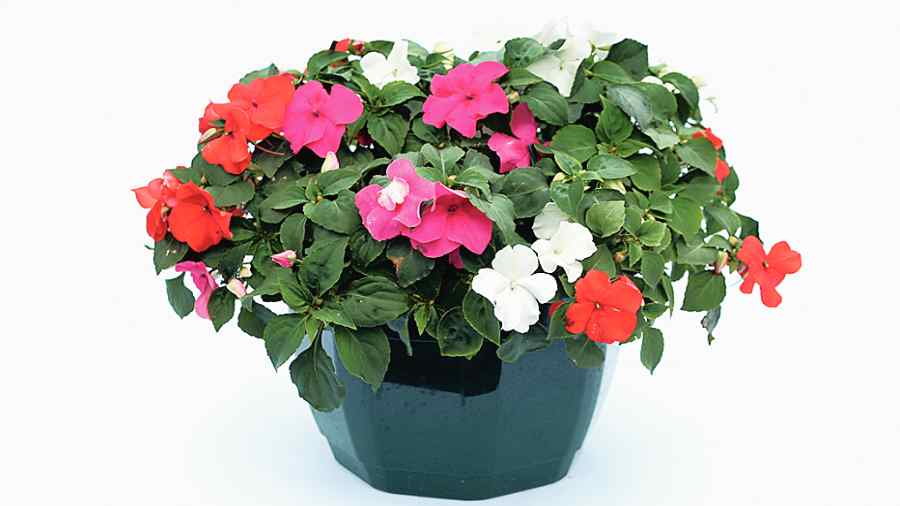They are known as Touch-Me-Nots, Jewelweed, Snapweed but are best known as Impatiens. A profuse bloomer with succulent stems, they come in many colours — red, pink, violet, white... you name it!
The plant gets its name from the Latin word for “impatient”. It is named so because of its seed pods, which burst open when ripe to disperse their seeds into nature.
Impatiens is a genus consisting of about 850 to 1,000 species of flowering plants. In West Bengal, we cultivate Impatiens in winter as an annual flower. It is immensely popular among growers due to its ability to grow in shady places as well. They are native to Africa, Eurasia and North America and a few isolated areas in central America. Most of the species are found in Africa, Madagascar, Southeast Asia, the Western Ghats and the Himalayas.


Here is how to care for the plant-
Light: Impatiens are quite sensitive to heat. They do not like direct sunlight. They thrive in a partially sunny location. They can also be grown in full shade.
Soil preparation: Impatiens prefers moist, well-drained and humus-rich soil. Take 40 per cent garden soil, 40 per cent vermicompost or well-rotted cow manure and 20 per cent coarse sand. Add one cup bone dust, two teaspoons of Super Phosphate, one teaspoon potassium and one teaspoon SAAF (or any fungicides).
Watering: Impatiens grow very well in humid conditions. They need regular watering. Keep them evenly moist - not too wet, not too dry. Over-watering will result in root rot and fungal diseases. Long dry spells will cause wilting of the plant and eventually they will lose their leaves.
Fertiliser: Spray water-soluble balanced (20:20:20 or 19:19:19) NPK 2g/l fortnightly.
Disease/ pest control: Impatiens are prone to aphids, thrips, white flies, mealy bugs, slugs, snails, mildew and spider mites. They are also affected by rot, viruses and fungal blights. Use systemic fungicides and pesticides regularly. For fungicide use SAAF/ Bavistine 2g/l and for pesticides use Tafgor/ Rogor etc.

Impatiens look attractive planted in pots and hanging baskets
Propagation: Impatiens can be propagated by germination of seeds or by plant shoot cuttings. Propagation by seeds is time-consuming and seed-grown plants will take a long time to mature and produce flowers. Plants from seeds will bloom from the second year onwards.
Plant shoot cutting is a very popular method to propagate Impatiens plants. Cut Impatiens plants using sterile cutting tools in 4’’or 6’’ long parts with lots of leaves and plant them in a freely draining and aerated soil. Keep them in a shaded place for a week. Slowly introduce them to partial sun. They will thrive easily within a few weeks and will flower profusely.
